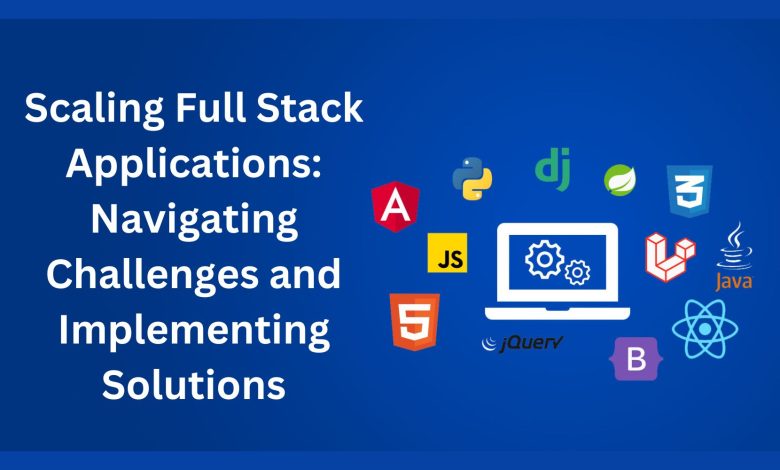Scaling Full Stack Applications: Navigating Challenges and Implementing Solutions
Scaling Full Stack Applications
Introduction:
As technology advancements propel us into an era of unprecedented digital growth, the demand for scalable full-stack applications has never been higher. Developing robust applications that can handle increasing user loads while maintaining optimal performance is a multifaceted challenge. This article explores the complexities of scaling full-stack applications, shedding light on common challenges and offering strategic solutions to ensure seamless scalability.
The Significance of Scalability:
Scalability is a critical attribute of any successful full-stack application. It refers to the system’s ability to handle a growing amount of work, such as an expanding user base, increased data volume, or additional functionalities. Failing to address scalability from the early stages of development can result in performance bottlenecks, degraded user experiences, and ultimately, the inability to meet the demands of a growing audience.
Challenges in Scaling Full Stack Applications:
Database Scalability:
Managing an expanding database can be a significant hurdle. As user data accumulates, traditional databases may struggle to efficiently handle queries and updates, leading to performance degradation. Sharding, replication, and adopting scalable database solutions like NoSQL databases are common strategies to overcome this challenge.
Load Balancing:
Uneven distribution of incoming traffic can strain specific components of an application. Load balancing ensures even distribution, preventing server overload and maintaining optimal response times. Implementing load balancing algorithms and utilizing dedicated load balancing tools can address this challenge effectively.
Caching Strategies:
Inefficient data retrieval processes can be a bottleneck in application performance. Implementing caching mechanisms, both at the server and client sides, helps reduce the load on databases and speeds up response times. Strategies like content delivery network (CDN) integration and in-memory caching can enhance overall application efficiency.
Microservices Architecture:
While microservices offer flexibility, they can introduce complexities in terms of communication and coordination. Implementing effective service discovery mechanisms, API gateways, and monitoring tools helps manage the intricacies of a microservices architecture, ensuring seamless communication and scalability.
Solutions to Scaling Challenges:
Horizontal Scaling:
Instead of investing in more powerful hardware, horizontally scaling involves adding more machines to distribute the workload. Cloud platforms facilitate easy horizontal scaling by providing resources on-demand, allowing applications to adapt to changing demands efficiently.
Containerization and Orchestration:
Containerization technologies like Docker and orchestration tools such as Kubernetes simplify the deployment and management of applications. Containers encapsulate application components, making them portable and scalable across different environments.
Automated Scaling Policies:
Implementing automated scaling policies enables dynamic adjustment of resources based on real-time demand. Cloud providers offer auto-scaling services that automatically adjust the number of resources, such as virtual machines, based on predefined conditions.
Performance Monitoring and Optimization:
Continuous monitoring of application performance is crucial for identifying potential bottlenecks. Utilizing monitoring tools and employing optimization techniques, such as code profiling and database indexing, helps ensure that the application operates at peak efficiency.
Read also: Business Development Executive
Conclusion:
Scaling full-stack applications is an ongoing process that demands strategic planning and continuous adaptation. Addressing challenges related to database scalability, load balancing, caching, and microservices architecture requires a holistic approach. By embracing solutions such as horizontal scaling, containerization, automated scaling policies, and performance optimization, developers can build and maintain applications that not only meet current demands but are also poised to evolve with the dynamic landscape of technology.
For those aspiring to master the art of full-stack development and contribute to the scalable applications of the future, enrolling in the best online full-stack developer course in Chandigarh , Nashik, Noida and all locations in India can provide a structured and comprehensive learning experience. These courses offer hands-on training, real-world projects, and expert guidance, ensuring that learners not only grasp the theoretical aspects but also gain practical skills in building and scaling robust applications. Embrace the evolving world of technology by choosing the right online course to become a proficient full-stack developer, well-equipped to meet the ever-increasing demands of the digital era.




